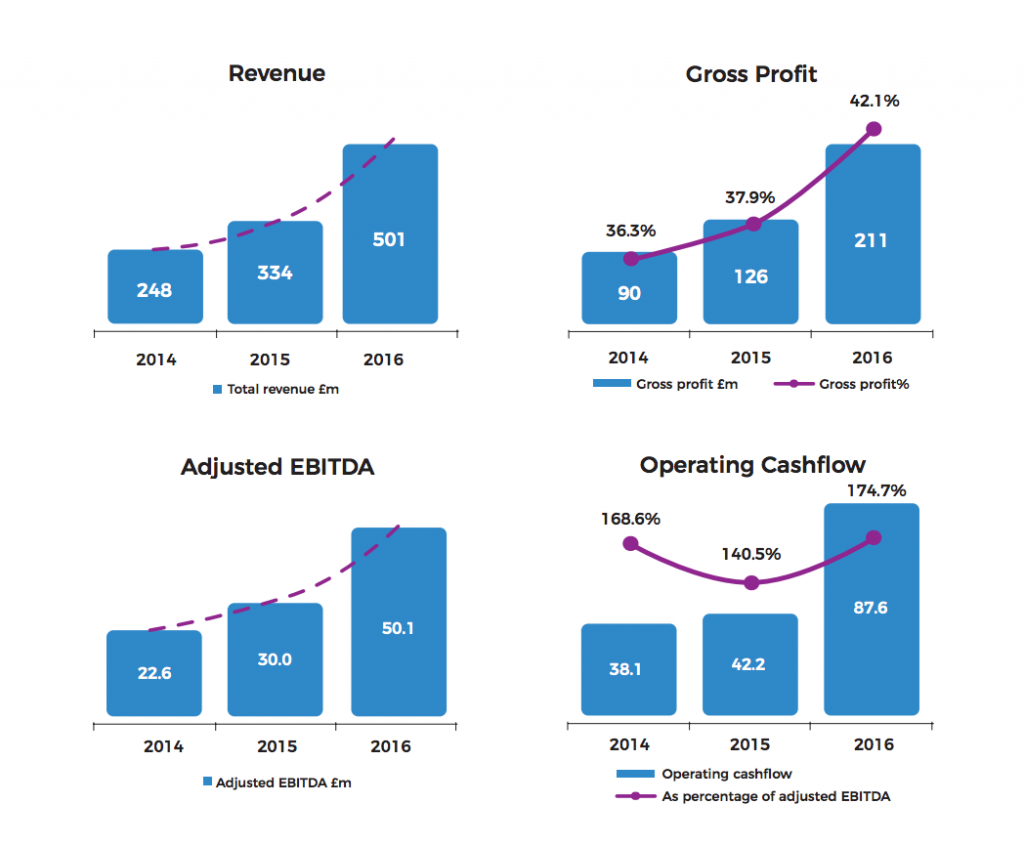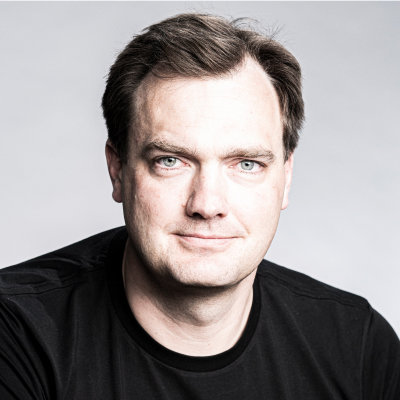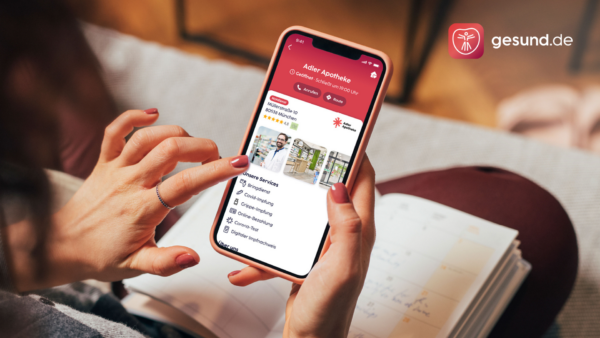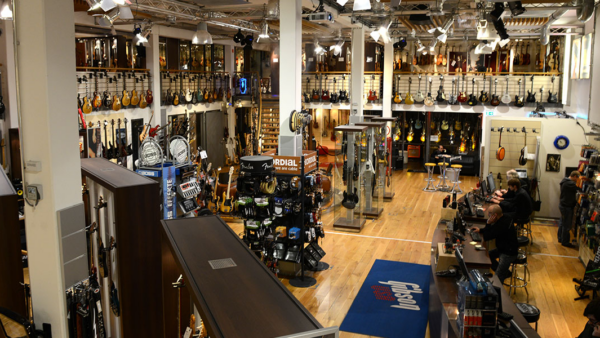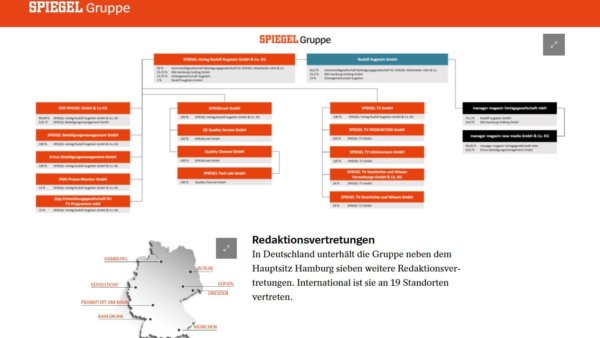 Jochen Krisch schreibt nun seit zwei Jahren unermüdlich über die Hut Group, die sich mit den jüngsten Akquisitionen zum Milliardenunternehmen entwickelt und so schwer zu greifen ist, dass sich eine Kassenzone Analyse geradezu aufdrängt. Das Unternehmen ist deshalb schwer zu greifen, weil es in kein klassisches Bewertungsraster fällt. Vom CD-Händler zur Multibrandwebseite bis hin zum Douglas Konkurrenten ist fast jede Sicht vertretbar. Eine schöne Gelegenheit also für die neu geschaffene Analyserubrik, die durch das Feedback zu den Case Studies aus dem E-Commerce Buch entstanden ist. An dieser Stelle möchte ich daher die Vorlage aufgreifen und bestehende sowie neue Case Studies zur Diskussion bringen. In dieser Reihe habe ich bisher Bonobos (zu schnell zu groß), ULTA (Musterbeispiel für stationäre Digitalisierung), Zappos (Am Tropf von Amazon), Farfetch (Das nächste Fab.com), Stitchfix (Ich bin ein Fan!) und Etsy/DaWanda (Hausgemachte Probleme) betrachtet. Das Material für die Analysen wird von eTribes bereitgestellt – eine der führenden Digitalberatungen in Deutschland. Viele von euch kennen eTribes bereits aus den vielen Knut Digital Studien.
Jochen Krisch schreibt nun seit zwei Jahren unermüdlich über die Hut Group, die sich mit den jüngsten Akquisitionen zum Milliardenunternehmen entwickelt und so schwer zu greifen ist, dass sich eine Kassenzone Analyse geradezu aufdrängt. Das Unternehmen ist deshalb schwer zu greifen, weil es in kein klassisches Bewertungsraster fällt. Vom CD-Händler zur Multibrandwebseite bis hin zum Douglas Konkurrenten ist fast jede Sicht vertretbar. Eine schöne Gelegenheit also für die neu geschaffene Analyserubrik, die durch das Feedback zu den Case Studies aus dem E-Commerce Buch entstanden ist. An dieser Stelle möchte ich daher die Vorlage aufgreifen und bestehende sowie neue Case Studies zur Diskussion bringen. In dieser Reihe habe ich bisher Bonobos (zu schnell zu groß), ULTA (Musterbeispiel für stationäre Digitalisierung), Zappos (Am Tropf von Amazon), Farfetch (Das nächste Fab.com), Stitchfix (Ich bin ein Fan!) und Etsy/DaWanda (Hausgemachte Probleme) betrachtet. Das Material für die Analysen wird von eTribes bereitgestellt – eine der führenden Digitalberatungen in Deutschland. Viele von euch kennen eTribes bereits aus den vielen Knut Digital Studien.
Was genau macht die The Hut Group?
Das Unternehmen aus Manchester hat sich kundenseitig ganz unbemerkt zur dominanten Onlineplattform für Fast Moving Consumer Goods entwickelt. The Hut Group ist mit 2,5 Mrd. Pfund Unternehmensbewertung, auf dem Weg zum Umsatzmilliarde (2017 sollen es 750 Mio Pfund werden) und zuletzt mit Akquisition von Glossybox als weiteren Schritt in den deutschen Markt nicht mehr zu ignorieren. Dabei geht der Markenhersteller erfreulicher Weise gern unkonventionell vor. So tritt es teils auf wie ein Tech Startup, teils wie ein Markenimperium, das sich immer neue Marken hinzukauft, hat sich gegen IPO und für den Weg Private Equity (unter anderen sind KKR und Balderton investiert) entschieden und investiert stark (2017 sollen es 400 Mio Pfund werden) in Akquisitionen, internen Markenaufbau, und Technologie.
Der erste Klick führt uns traditionell auf die About Seite:
Back in 2004, The Hut Group provided white label e-commerce websites for grocery retailers. We’ve come a long way since then, but our ethos has remained the same. Whatever project we’re working on, pioneering change and improving customer experience comes first. From 2008, we acquired a series of entertainment and fashion brands, including Zavvi, AllSole and MyBag. We’ve been health and beauty specialists since 2010, with Myprotein and Lookfantastic leading our portfolio of lifestyle websites. Internationalisation started in 2013 and we haven’t looked back. We currently trade in nearly 200 countries in over 20 languages, supported by 24 currencies. We’re gaining physical ground too, with our flagship warehouse, Omega, and a US production facility opening earlier this year.
Die Geschichte ist schon sehr sehr ungewöhnlich, aber je mehr ich über das Unternehmen lese, desto spannender finde ich die Aktivitäten.
- In einem lesenswerten Interview erzählt der Gründer, wie er “irgendwie einfach so” The Hut Group gestartet hat, fast als wäre es ein Unfall gewesen. Der Industrieökonom verdiente eben irgendwann so viel Geld und sah die Zukunft im Internet und dann hat er eben 2004 einen Onlineshop für CDs und DVDs gestartet.
I just knew that the internet was going to be big and the entertainment industry was huge at the time so I wanted to launch an online business doing just that.
- 2007 erreichte die Hut Group den Breakeven
- 2008 realisiert man, dass CDs wohl nicht die Zukunft des E-Commerce sind => Startpunkt der wilden Multi Store Strategie, eine ganz typische Strategie für diese Zeit (siehe hayneedle & Co.), aber nur die Hut Group ist damit bis heute durchgekommen
Moulding looked at a number of options and started trialling a range of products from selling flowers, fresh food, sweets, clothing, furniture and handbags to see which business model worked best and during the process he came up with a set of rules. “What we discovered was that we didn’t like big items because there had to be a two-man delivery and we couldn’t scale it globally,” said the father-of-four. “We didn’t like fresh products because if they were delicate then there was the risk of breakage during transit and they had a short life span and we didn’t want things with high returns either.” And through this process they settled on health and beauty.
- Schon früh startete THG eine ausgiebige Shoppingtour, um sich den Beautymarkt Kunden- und Markenseitig zu erschließen, seit 2013 auch zunehmend, um zu internationalisieren
The Hut Group had grown into a £84m business with 100 staff in its Northwich headquarters. Its growth was organic but also via strategic acquisitions. It had snapped up a number of businesses including IWantOneOfThose.com, but it was the acquisition of Lookfantastic for £20m that helped propel the business to the next level giving it further reach into the luxury products market.
- Das Portfolio wurde um immer mehr Verticals erweitert und ist heute in den Kategorien Sport / Ernährung, Mode, Kosmetik, Entertainment unterwegs.
- Die in-house entwickelte Technologie läuft heute auf über 100 Websites, davon auch andere Marken, die die Technologie als Whitelabel Lösung kaufen.
- Und zum Abschluss der Geschichte noch ein äußerst pressewirksames Statement Mouldings:
What’s really rewarding is creating jobs, building something everyone is passionate about and where people can make a good career. “Whereas if I sold to a corporate all I have got to focus on is spending that money, and after a few nice holidays and nice cars what’s next?
Wie kann man nach so einem Statement die Hut Group nicht mögen? Passend dazu kann ich noch den aktuellen Podcast von Jochen Krisch und Marcel Weiß empfehlen. Sie sind auch Fans.
Geschäftsmodell & KPIs
Auf den ersten Blick ist das Geschäftsmodell etwas schwer greifbar, weil die einfach so viele Eisen im Feuer haben. Aber im Grunde ja nichts anderes als ein traditioneller Multi-Brand Konzern. Die Presse ist sich allerdings nicht ganz so einig. So liest man von Produzent, Händler, Multi-brand Platform, Technology startup, Online-Handelsgruppe, “we invented multi-website retail”, brand owner and distributor, Hersteller und Markeninvestor.
Im Fokus stehen FMCG und zunehmend auch Abo-Modelle. THG führt einen Mix aus Markenshops und Händler; in den Bereichen:
- Health (mit Nahrungsergänzungsmitteln, Sport- und Diätprodukten)
- Fashion und Beauty
- Lifestyle (scheint eine eher ausrangierte Kategorie mit Gadget- und Entertainmentshops zu sein, aber auch mit dem Rennrad-Shop ProBikeKit)
- Marktplatz (mit dem Gebraucht-Marktplatz “Preloved”)
- Technology Services (hierzu komme ich gleich noch genauer)
Der Portfolioansatz erinnert so an Unternehmen wie 7Commerce oder Chaltec, die eine ähnliche, vertikal fokussierte Strategie verfolgen. THG sieht sich aber selbst eindeutig als Plattform:
‘THG IS A PLATFORM’ The Platform is wholly owned, entirely internally developed and fully end to end through the business, from the manufacture of the product, to the customer visit through to the order despatch, giving the business full control over all disciplines we identify as being essential if we are to further progress the business model. The model defines us as a brand owner and global distributor of prestige beauty and health products, consistently delivering high sales growth rates, geographical and margin progression, substantial profitability growth more than matched by impressive operating cash generation and a strong balance sheet. In addition to controlling the physical movement of product, the Group’s proprietary technology platform is central to the business model. The platform facilitates highly effective data-driven retailing through optimised website content and bespoke marketing, generating high levels of consumer loyalty, choice, repeat purchase and satisfaction. The retail activities of the Group focus on premium own brand product in Health and Beauty markets, both sectors characterised by low e-commerce penetration levels, a high degree of fragmentation and huge global demand. In addition to powering the Group’s own brands and retail sites, the Group’s Technology Services division provides business to business software and e-commerce platform services for media and brand partners.
Die Liste der Akquisitionen ist beeindruckend und mit dem Kauf eines Spa Anbieters, wagt THG nun den Schritt in die „analog“ Welt.
| Acquisition | Year | Company Description |
| Zavvi | 2009 | The Hut Group’s first acquisition was of Zavvi, an online entertainment business that had gone into Administration in 2008. |
| IWOOT – I Want One of Those | 2010 | The Hut Group bought IWOOT (IWantOneOfThose.com) from Findel Group as well as Confetti, a wedding accessories retailer. |
| Lookfantastic.com | 2010 | The Hut Group bought Lookfantastic group from the Crown family in November 2010. The business sells premium beauty skincare and haircare and operates beauty salons across the United Kingdom. |
| Mankind Direct | 2010 | The Hut Group bought Mankind Direct weeks after purchasing Lookfantastic Group. Mankind is a male-focused online grooming retailer. At the time, it reported £5M annual sales. |
| HQHair | 2011 | The Hut Group bought HQ Hair out of administration in 2011. |
| Myprotein | 2011 | The Hut Group bought Myprotein in 2011 in its first Health-focused acquisition. The acquisition was also notable in its size, with the deal estimated at £60M at the time of the announcement. |
| Coggles | 2013 | The Hut Group picked up luxury fashion retailer Coggles from Administration. Originally a predominantly physical retailer based in York, it is now operated solely online as part of The Hut Group’s e-commerce platform. |
| Preloved | 2014 | The Hut Group acquired online secondhand marketplace, Preloved from its founder Ian Buzer in 2004. The marketplace and community was started in 1998 and is one of the largest in the UK with over 6 million members. |
| Skinstore | 2016 | The Hut Group acquired US and Australian Beauty Retailer, Skinstore, from Walgreens Boots Alliance in 2016. The retailer is one of the leading online-only beauty retailers in USA (Skinstore.com) and Australia (Skincarestore.com).[34] |
| IdealShape | 2016 | The Hut Group acquired IdealShape, a US-based dieting and nutrition brand based out of American Fork, Utah. The female-focused dieting brand complements The Hut Group’s previous acquisition of ExanteDiet and Myprotein. |
| Glossybox | 2017 | The Hut Group acquired the biggest European provider of beauty box subscription services, GLOSSYBOX, from fellow investment companies Rocket Internet and Kinnevik Online. |
| ESPA | 2017 | The Hut Group acquired ESPA, which is based in the UK. ESPA has a presence in more than 700 spas in 60 countries. ESPA products are also are sold in retailers such as John Lewis (Department Store) and Harvey Nichols as well as top hotel chains including Ritz Carlton, Peninsula and One&Only. |
Die KPIs geben THG recht:
- 3.000 Mitarbeiter arbeiten dort und bis 2019 sollen es 6.000 sein
For example we have taken on 1,000 people this year, but we probably could’ve got away with just a couple of hundred and our financial results would still be around the same. But now that we’ve done that, I know next year’s growth will be driven by that talent pool we have brought in. We have invested heavily in both people and infrastructure, and I believe that that’s what drives you forward.
- 2016 501 Mio Pfund umgesetzt, davon über 60% außerhalb der UK, EBITDA von 50 Mio Pfund
- In Q1 2017 kommen schon 71% der Umsätze aus dem Ausland
- Im Geschäftsbericht heißt es:
# £252M investment in to drive international and domestic expansion
# Over 1,200 jobs created in the UK alone
# International Sales (non-UK) grew 89%
# £153m of capital was deployed in physical infrastructure projects including manufacture, distribution, supply chain and office accommodation. This included two food production and distribution facilities commissioned – a 1m sq ft Cheshire based facility (Omega) and a Kentucky based US facility
# £91m of investment in the Group’s technology platform to further enhance its functionality and globalisation capability. The Hut Group’s Platform now operates on 47 languages and 30 currencies, is supported by 23 payment options, delivering to 195 Postal Territories with 27 final mile couriers
# £63m of acquisitions targeted at specifically developing the Group’s own brand proposition as well as geographical reach of its beauty supply chain
Erfolg dank Geschwindigkeit & Technologiekompetenz
Die Wachstumsraten, das positive Ergebnis und das alles mit einer scheinbar längst überholten Strategie. Ich frage mich die ganze Zeit warum THG schafft, was andere nicht schaffen und die einzige Erklärung für mich ist, dass sie ihre operativen Themen im Griff haben (vor allem die Technologie), wenig Overhead produzieren und einfach schnell vorankommen. Während Douglas drei Jahre an einer Plattformstrategie feilt, hat THG schon fünf passende Unternehmen identifiziert, gekauft und integriert.
Sich selbst sieht THG strategisch als Technologieunternehmen. Ähnlich wie die Zalando-Devise sieht Gründer Moulding die Technologie im Kern und das zu verkaufende Produkt ist eben austauschbar:
To create a valuable business, staying in entertainment wasn’t the right thing to do as we knew we couldn’t compete with the likes of Apple, and as a result I started to look at what else would work online. We had the infrastructure – we just needed the right products.
Dazu bietet THG seit 2011 seine E-Commerce Plattform nun auch als Whitelabel an:
In addition to powering our distribution centres, our technology platform, now entering its second decade, continues to be the engine of our growth. Continued investment (£19m) in our end to end proprietary technology platform facilitates our global scale and addresses the ever changing social trends of our customers across the globe.
Der Unternehmenszweig nennt sich Technology Services und nennt Kunden wie Honda, Nintendo und spannender Weise auch Konkurrent Unilever, für die THG einen B2B Shop für deren Marke Lipton gebaut hat. Auch Fashionlabel wie Elisabeth Arden nutzen seit 2015 die Plattform:
Elizabeth Arden, a global prestige beauty products company, has launched its new http://www.elizabetharden.co.uk/ecommerce website, powered by The Hut Group’s proprietary technology platform and utilizing the online retail specialist’s marketing, fulfilment, customer service and commercial expertise. The partnership combines Elizabeth Arden’s globally-recognised brand with The Hut Group’s award-winning infrastructure and consumer analytics to provide a tailored brand experience, exclusive offerings and the ability to have the full UK range delivered next day if ordered by 9pm.
Sicher ist die Zusammenarbeit mit der vermeintlichen Konkurrenz für THG auch nicht ganz uninteressant. Was kann die Unternehmensgruppe, was die Konkurrenz nicht kann? Laut Website sind es vor allem 5 Bereiche:
Our in-house platform combines five unique skills for online retail: cross-channel digital marketing, customer data science, artificial intelligence, internationalisation and direct to consumer fulfilment.
Nun rächt sich also, dass die Retailer mit analoger DNA jahrelang beim Thema IT gespart haben oder sich mit Lösungen von der Stange aufgehalten haben. So richtig abgefahren sind die Lösungen von THG gar nicht. Das ist nur ganz einfach gut umgesetzt und die Lösungen und Strategien in diesem Markt liegen auf der Hand. Mit Boris Lokschin habe ich darüber vor kurzem ein Interview geführt.
Wie ist das nun zu bewerten?
Mareike, meine langjährige Kollegin, geheime Kraft hinter dem E-Commerce Buch und Analystin zu diesem Beitrag sagt:
The Hut Group und ähnliche marken-fokussierte Digitalunternehmen sind möglicherweise die nächste Generation der E-Commerce-Geschichte, die neben den Plattformansätzen von Zalando und Amazon den Markt bestimmen. THG verfolgt einen klaren Portfolioansatz, ist damit schon quasi privater Investor in Markenkonzepte und streut dadurch das Risiko über Verticals und Geschäftsmodelle. Das Unternehmen kann so langfristig Kundengruppen, Marketingmechanismen und innovative Modelle testen – das klingt für mich erst einmal nicht nur nach Spaß, sondern eben auch nach einem reizvollen Ansatz. Jedoch ist THG aus meiner Sicht eigentlich nichts anderes als die digital fokussierte und technologisch stark aufgestellte Version von Unilever und Co. Damit muss das Unternehmen weiter mit Konkurrenz der Plattformen rechnen und so wird meiner Meinung nach das Ganze erst dann spannend, wenn man diese auch als Absatzkanal in die Strategie integriert, anstatt in den direkten Wettbewerb zu gehen.
Unilever, Douglas und Co. sind strategisch und finanziell so aufgestellt, dass sie die Strategie der Hut Group imitieren könnten und damit wohl auch Erfolg hätten. Für Henkel, Unilever und ein paar andere Konzerne wäre THG auch ein passender Übernahmekandidat, aber die Gruppe will gar nicht übernommen werden, wenn ich die Interviews mit dem Gründer richtig interpretiere. Der einzige Haken an dem Modell ist die mangelnde Expertise in Richtung mobile & Messenger. Sehr viele Bereiche der Technologieplattform sind noch auf klassische Webseiten ausgerichtet auf die Kunden gelockt werden, um dort zu einzukaufen. Das Modell hat aus meiner Sicht ein sehr endliches Haltbarkeitsdatum, aber solange die sich die meisten Konzerne noch mit der Neubesetzung von „Chief Digital Officer“ Positionen beschäftigen, kann THG noch ungestört wachsen und viele hundert Millionen Euro Umsatz mitnehmen. Vielleicht übersehe ich aber auch was und ich würde mich über ein paar „alternative“ Meinungen in den Kommentaren freuen.
Der nächste Kandidat für die Kassenzone Analyse ist die Tencent Gruppe, gefolgt von Wish und irgendwann Anfang November Mediamarkt Auch dafür wird das Analysematerial von eTribes bereitgestellt – eine der führenden Digitalberatungen in Deutschland. Viele von euch kennen eTribes bereits aus den vielen Knut Digital Studien. Weitere Vorschläge für neue Analyseziele gibt es im Whatsapp Kanal.
